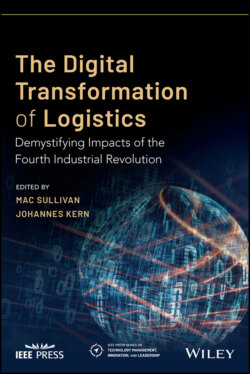Читать книгу The Digital Transformation of Logistics - Группа авторов - Страница 64
Introduction
ОглавлениеAdditive manufacturing (AM), casually also called 3D printing or rapid prototyping, is one of the key elements of the Fourth Industrial Revolution that is predicted to strongly impact supply chains (Verboeket and Krikke 2019; Fan et al. 2020). While in subtractive manufacturing, the typical way of how things are made today, material is removed in a controlled way, in AM, material is added based on a digital 3D drawing or model (Carr 2017). Depending on the specific technology used, complex and light designs can be created, parts developed more dynamic, and production lead times reduced (General Electric 2020). AM is envisioned to become widely spread as currently still existing constraints are progressively overcome (Schwab 2017). Already today, the technology is applied across a wide array of products. In aerospace, NASA has been experimenting with printed rocket injectors since 2013 (Holmström et al. 2016). In aviation, in 2014, a 3D‐printed titanium bracket took to the skies on board of an Airbus jetliner for the first time (Airbus 2020). Also in automotive, the technology has been used already for a decade in F1 racecars. Recently, in its commercial vehicle segment, the OEM1 Daimler started to fully integrate it into its development and production process (Sher 2020). The company also uses AM to print spare parts, where according to a spokesperson “production and delivery of a 3D‐printed part takes only a few days as opposed to several months (while producing) considerably less waste (Garnsey 2020).” In the medical industry, customized prosthetics, implants, and anatomical models are widely manufactured with AM, and research about producing tissue and even organs (“bioprinting”) is ongoing (Ventola 2014). Although such applications are noteworthy, it must be recognized that AM is not suitable for every manufacturing need and that there are still barriers to overcome.
This chapter takes the form of six sections. First, the vision of the AM supply chain will be compared with a conventional supply chain. Then, the technology's advantages and remaining bottlenecks will be explained. This is followed by an overview of various AM technologies and materials. Typical application scenarios will be subsequently derived. Afterward, markets and trends will be accounted for. The chapter then ends with a conclusion that summarizes the status of the technology and its potential supply chain impact.
